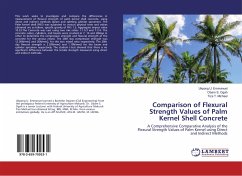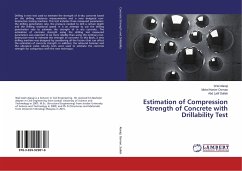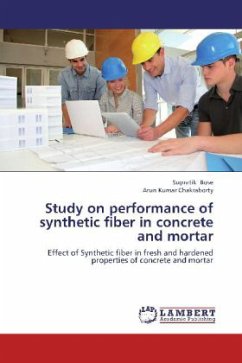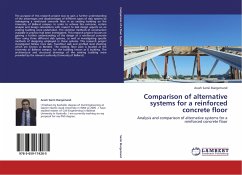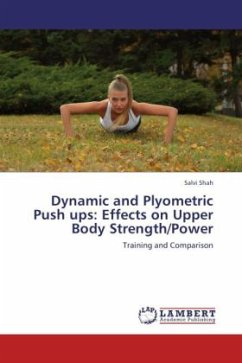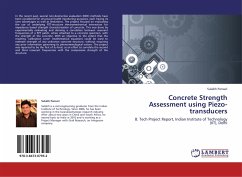
Concrete Strength Assessment using Piezo-transducers
B. Tech Project Report, Indian Institute of Technology (IIT), Delhi
Versandkostenfrei!
Versandfertig in 6-10 Tagen
32,99 €
inkl. MwSt.

PAYBACK Punkte
16 °P sammeln!
In the recent past, several non-destructive evaluation (NDE) methods have been considered for structural health monitoring purposes, each having its own advantages as well as limitations. The project focused on evaluating the use of underlying PZT-structure electromechanical interaction for impedance based strength characterization of concrete. This was done by experimentally evaluating and deriving a correlation between resonant frequencies of a PZT patch, when attached to a concrete specimen, with the strength of the concrete. With an objective to the extent that the resulting calibration cu...
In the recent past, several non-destructive evaluation (NDE) methods have been considered for structural health monitoring purposes, each having its own advantages as well as limitations. The project focused on evaluating the use of underlying PZT-structure electromechanical interaction for impedance based strength characterization of concrete. This was done by experimentally evaluating and deriving a correlation between resonant frequencies of a PZT patch, when attached to a concrete specimen, with the strength of the concrete. With an objective to the extent that the resulting calibration curve (mathematical equation) could be used to estimate strength of any unknown concrete structure, without requiring any prior information governing its phenomenological nature. The project was reported to be the first of its kind, as an effort to correlate the second and third resonant frequencies with the compressive strength of the structure.



